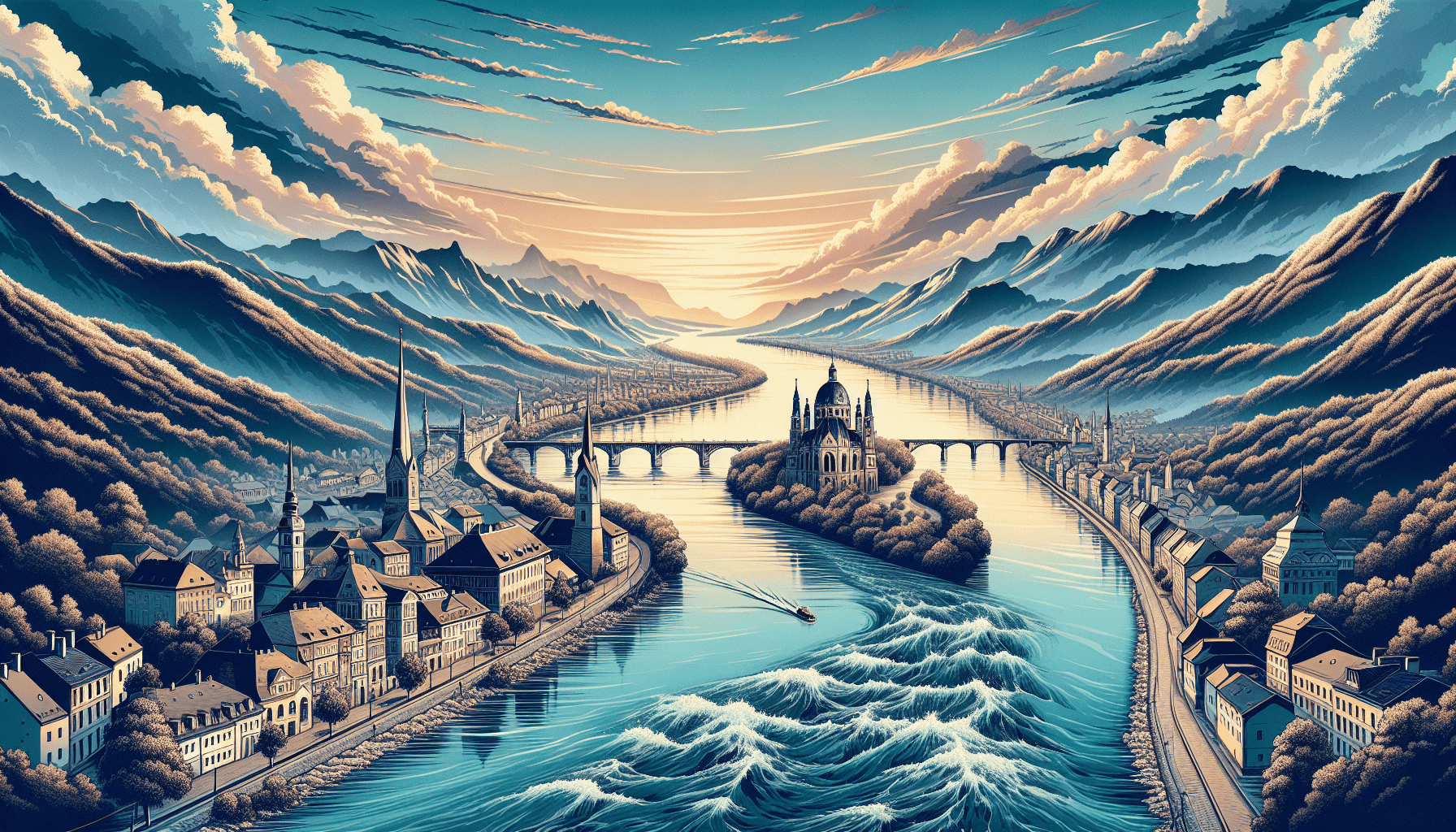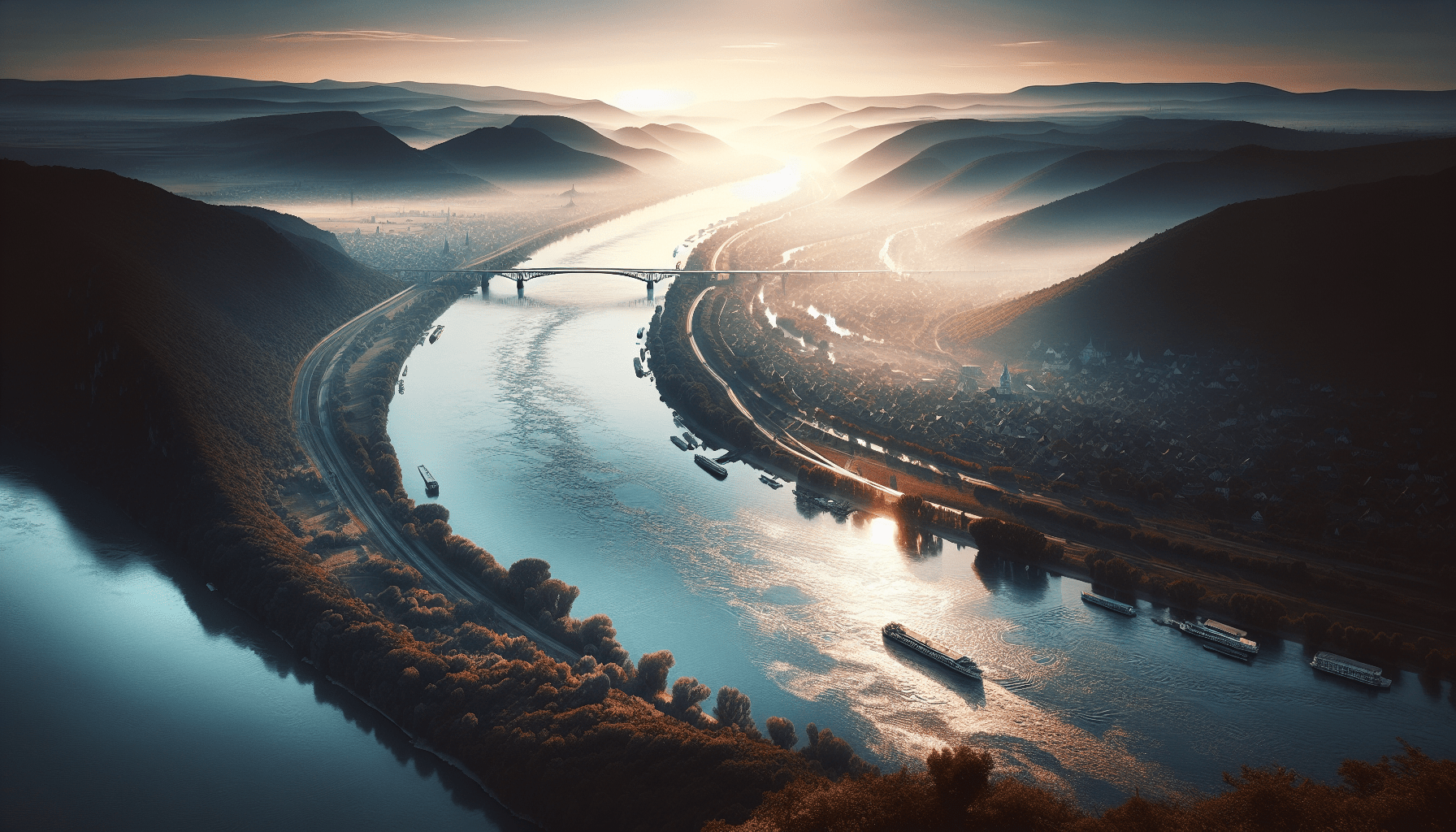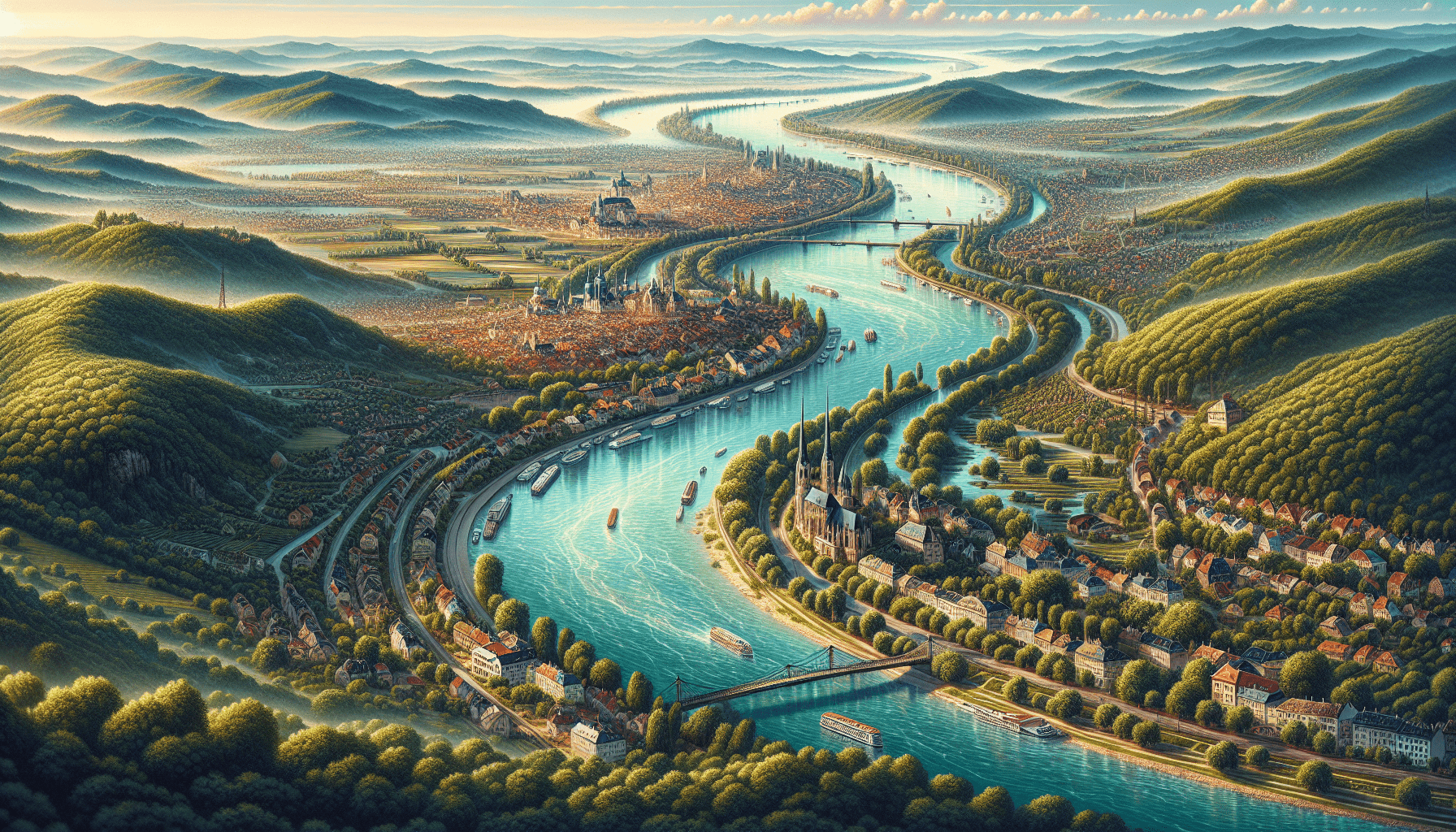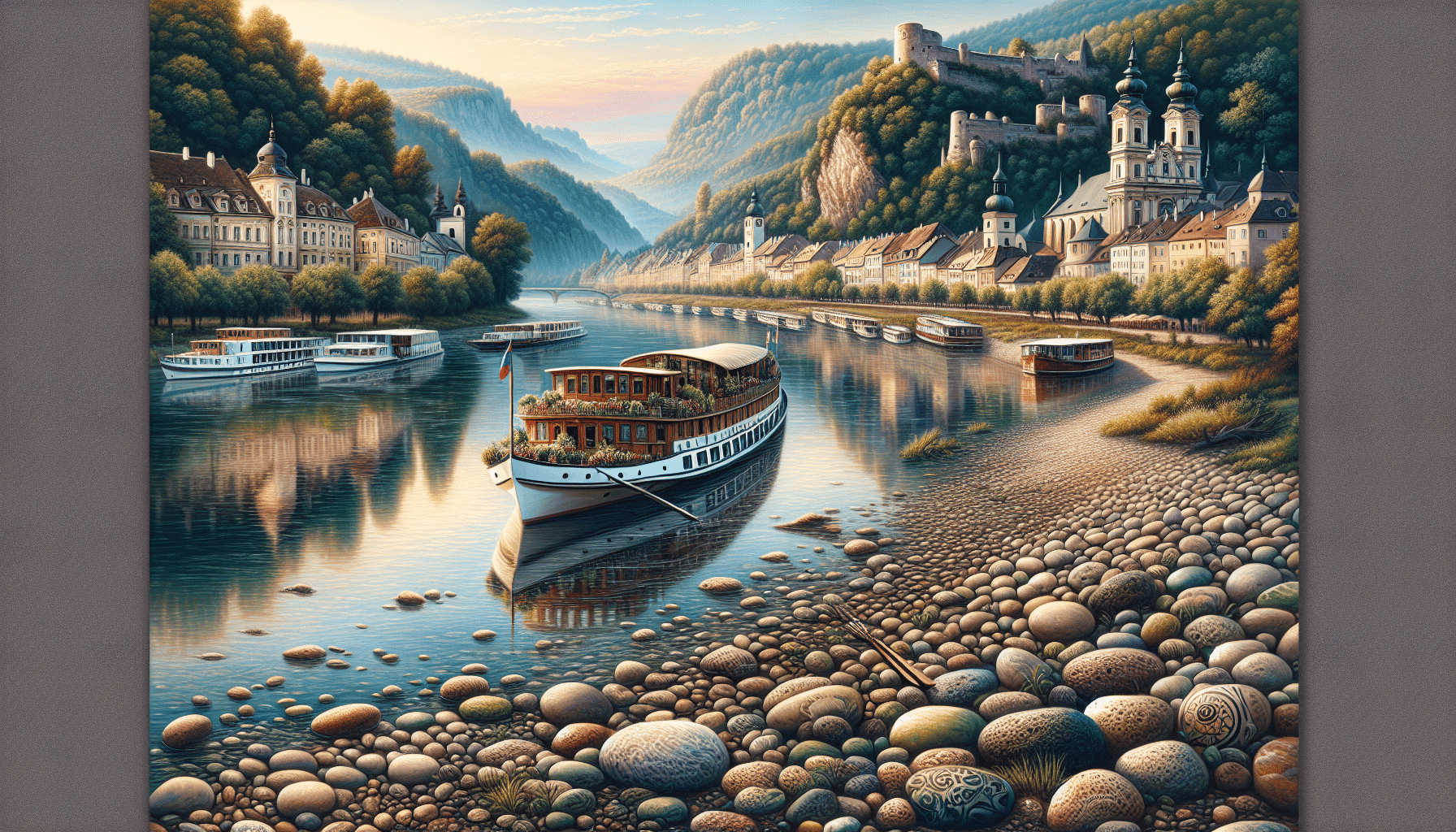
Have you ever wondered what makes the Danube River so famous? Well, let me tell you that this majestic river holds many secrets and delights that have captivated people for centuries. From its rich history, stunning landscapes, and cultural significance, the Danube River is a true gem of Europe. Whether you are a history enthusiast, a nature lover, or simply looking for a unique travel experience, the Danube River has something for everyone. Let’s explore the wonders that make the Danube River truly famous. The Danube River is famous for its rich history and cultural significance, as well as its stunning natural beauty and diverse ecosystem. Let’s dive into the various aspects that make the Danube River such a celebrated destination.

1. Geographic Features of the Danube River
1.1 Length and Location
The Danube River is the second-longest river in Europe, stretching approximately 2,850 kilometers (1,770 miles) from its source in the Black Forest of Germany to its delta in the Black Sea. It flows through ten countries, including Germany, Austria, Slovakia, Hungary, Croatia, Serbia, Bulgaria, Romania, Moldova, and Ukraine. Its vast geographical span gives it a unique character as it passes through different landscapes, climates, and cultures.
1.2 Tributaries
The Danube River is fed by numerous tributaries, the most significant of which are the Inn, Drava, Tisza, and Sava rivers. These tributaries not only contribute to the river’s water volume but also enhance its scenic beauty. The merging of these tributaries results in breathtaking river formations and picturesque landscapes.
1.3 River Basin
The vast river basin of the Danube covers an area of approximately 801,463 square kilometers (309,447 square miles), making it the second-largest river basin in Europe. This expansive river basin has a significant impact on the surrounding ecosystems, supporting a wide range of flora and fauna. The diverse landscapes within the river basin, including wetlands, floodplains, and meadows, contribute to the Danube’s environmental and ecological importance.
2. Historical Significance
2.1 Ancient Civilizations
The Danube River has played a crucial role in the development of ancient civilizations. Its strategic location has attracted settlements and allowed for trade and cultural exchanges. Ancient civilizations such as the Celts, Romans, and Illyrians thrived along its banks, leaving behind traces of their fascinating history. The river served as a natural barrier and a conduit for cultural diffusion, shaping the region’s historical narrative.
2.2 Roman Empire
During the Roman Empire, the Danube River served as the northern border, known as the Limes, defending the empire from invading tribes. The Roman presence along the Danube brought prosperity and cultural influence to the region. Some well-preserved remains of Roman fortifications and settlements can still be found along the river, offering a glimpse into the past.
2.3 Medieval Trading Route
Throughout the Middle Ages, the Danube River served as a vital trading route, connecting the west with the east. Merchants transported goods along the river, facilitating trade between different regions and cultures. This trade route stimulated economic growth and cultural exchange, leaving an indelible mark on the cities and towns that flourished along its banks.
2.4 Ottoman Empire
The Ottoman Empire’s expansion into Eastern Europe brought the Danube River under its influence. The empire utilized the river for transport and trade, further enhancing its strategic and economic importance. The legacy of the Ottoman Empire can still be seen in the architectural and cultural elements that define certain areas along the river, adding to its historical significance.
3. Cultural Importance
3.1 Artistic Inspiration
The Danube River has long been a source of inspiration for artists, writers, and musicians. Its impressive landscapes, charming towns, and cultural diversity have served as backdrops for countless masterpieces. The river’s tranquil beauty and ever-changing scenery have inspired renowned composers like Johann Strauss II and Ludwig van Beethoven, who composed works that captured the spirit and allure of the Danube.
3.2 Folklore and Mythology
The Danube River is steeped in folklore and mythology, offering tales of legendary creatures and enchanted landscapes. Throughout history, people along the river have shared stories of water nymphs, river gods, and mythical beasts. These tales have been passed down through generations, enriching the cultural fabric of the region and adding an air of mystique to the Danube’s already captivating allure.
3.3 UNESCO World Heritage Sites
The Danube River boasts several UNESCO World Heritage Sites that highlight its cultural significance. Locations such as the Historic Center of Vienna in Austria, the Old Town of Regensburg in Germany, and the Danube Delta in Romania are recognized for their unique architectural, historical, and natural value. These sites draw visitors from around the world, showcasing the rich heritage preserved along the Danube.
4. Economic Importance
4.1 Navigation and Transportation
The Danube River has been a crucial transportation route for centuries, enabling the movement of goods and people. Its navigable waters facilitate trade and commerce, connecting regions and fostering economic growth. Today, the river continues to serve as a major transport artery, accommodating cargo ships, barges, and recreational boaters, contributing to the economic vitality of the countries it traverses.
4.2 Hydroelectric Power
The Danube River’s flowing waters have immense hydroelectric potential. Numerous dams and hydroelectric power plants have been constructed along the river, harnessing its energy to generate electricity. This sustainable and renewable energy source provides power to communities and industries, reducing reliance on fossil fuels and promoting environmental conservation.
4.3 Fishing and Agriculture
The Danube River supports vibrant fishing and agricultural industries. The river’s waters teem with various fish species, providing a valuable resource for fishing communities. Additionally, the fertile soils along the riverbanks support agriculture, with crops like wheat, corn, and sunflowers thriving in the Danube basin. These industries contribute to the local economies and provide a source of livelihood for many communities.
4.4 Tourism
The Danube River is a sought-after destination for tourists, attracting millions of visitors each year. Its breathtaking landscapes, historic cities, and cultural heritage make it an ideal setting for river cruises, sightseeing tours, and outdoor recreational activities. The tourism industry along the Danube generates substantial revenue for the countries and communities that benefit from the influx of visitors.

5. Biodiversity and Environmental Value
5.1 Rich Ecological System
The Danube River boasts a rich and diverse ecological system. Its waters support a wide array of plant and animal species, including several endangered and protected species. The river’s flow and varied habitats, ranging from wetlands to riverbanks, provide vital breeding grounds and habitats for many organisms, ensuring the long-term survival of diverse ecosystems.
5.2 Protected Areas and Wildlife
To preserve its unique environmental value, the Danube River is home to numerous protected areas and nature reserves. These areas strive to conserve the region’s biodiversity and provide a sanctuary for endangered species, including the Danube sturgeon and the Eurasian otter. Visitors can explore these protected areas and witness firsthand the stunning wildlife that thrives within the Danube’s fragile ecosystem.
5.3 Conservation Efforts
Recognizing the importance of preserving the Danube River’s natural heritage, conservation initiatives and organizations work tirelessly to protect and restore the river’s ecosystems. Efforts such as habitat restoration, water quality monitoring, and species reintroduction programs aim to maintain the Danube’s environmental balance for future generations to enjoy. These conservation efforts demonstrate the commitment to safeguarding the Danube’s ecological integrity.
6. Famous Cities Along the Danube River
6.1 Vienna, Austria
Vienna, the capital of Austria, sits gracefully on the banks of the Danube River. Known for its artistic and musical heritage, Vienna blends historical grandeur with modern sophistication. The city’s stunning architecture, including the iconic St. Stephen’s Cathedral and the opulent Schönbrunn Palace, entices visitors to explore its rich cultural offerings.
6.2 Budapest, Hungary
Budapest, often referred to as the “Pearl of the Danube,” is a vibrant city that straddles the river. The city is a treasure trove of architectural gems, such as the majestic Hungarian Parliament Building and the picturesque Buda Castle. Budapest’s famous thermal baths, lively markets, and lively nightlife make it a must-visit destination along the Danube.
6.3 Belgrade, Serbia
Belgrade, the capital of Serbia, is a melting pot of history, culture, and energy. Located at the confluence of the Danube and Sava rivers, Belgrade boasts an impressive fortress, intriguing museums, and a lively café culture. The city’s vibrant arts scene and bustling nightlife make it a thriving cultural hub in the heart of the Balkans.
6.4 Bucharest, Romania
Bucharest, the capital of Romania, is a city that blends centuries-old traditions with a modern spirit. The city’s impressive architecture, including the colossal Palace of the Parliament, coexists with charming cafes, parks, and cultural institutions. Bucharest’s vibrant arts and music scene, along with its rich history, make it an enticing stop along the Danube.

7. Danube River Cruises
7.1 Pleasure Boating
Danube River cruises offer a unique way to experience the beauty and charm of the river and its surroundings. Pleasure boating allows travelers to leisurely navigate the Danube while taking in the breathtaking landscapes, passing through picturesque towns, and immersing themselves in the rich cultural heritage along the way. This mode of travel provides a relaxing and immersive way to explore the region.
7.2 River Cruising Industry
The river cruising industry along the Danube has experienced significant growth in recent years. Luxury river cruise ships offer travelers unparalleled comfort and style as they meander along the river, stopping at various ports of call to explore the cities and towns along the Danube’s banks. These cruises provide a combination of sightseeing, fine dining, and onboard entertainment, creating unforgettable experiences for passengers.
7.3 Popular Cruise Routes
There are several popular cruise routes along the Danube River that highlight its most remarkable sights. One of the most iconic routes is from Vienna to Budapest, allowing travelers to witness the captivating beauty of both cities. Other popular itineraries include cruises that span multiple countries, providing a comprehensive exploration of the Danube’s rich cultural and historical tapestry.
8. Sporting and Recreational Activities
8.1 Water Sports
The Danube River offers numerous opportunities for water sports enthusiasts. Kayaking, canoeing, and paddleboarding are popular activities that allow individuals to explore the river’s tranquil waters, immersing themselves in its natural beauty. Rafting and white-water kayaking are also available on certain stretches of the river, providing an adrenaline-filled adventure for thrill-seekers.
8.2 Cycling and Hiking Trails
The banks of the Danube River are adorned with scenic cycling and hiking trails, inviting outdoor enthusiasts to explore the surrounding landscapes at their own pace. These trails span various lengths and difficulty levels, allowing individuals to embark on leisurely rides or challenging hikes while taking in the picturesque scenery and landmarks along the way.
8.3 Birdwatching
The Danube River’s diverse ecosystem attracts a myriad of bird species, making it a haven for birdwatchers. The wetlands, forests, and islands along the river provide breeding grounds and habitats for various avian species, including herons, eagles, and kingfishers. Birdwatchers can observe these majestic creatures in their natural habitats, capturing unforgettable moments and contributing to conservation efforts.

9. Festivals and Events
9.1 Danube Island Festival
The Danube Island Festival, held annually in Vienna, is one of the largest open-air music festivals in Europe. This vibrant event features a diverse lineup of musical performances, art displays, sports activities, and culinary delights. With stages set up along the riverbanks, festival-goers can enjoy a unique atmosphere while reveling in the sounds and tastes of this exhilarating event.
9.2 Danube Carnival
The Danube Carnival, celebrated in Mohács, Hungary, is a traditional cultural event that dates back centuries. Part of Hungary’s intangible cultural heritage, the carnival features colorful parades, traditional mask-wearing, and music-filled festivities. Visitors have the opportunity to witness ancient rituals and customs that have been preserved and passed down through generations.
9.3 Danube Day
Every year on June 29th, countries along the Danube come together to celebrate Danube Day. This event aims to raise awareness about the importance of the river and the need to protect its ecosystems. Various activities, such as river clean-ups, educational programs, and cultural events, are organized to engage communities and promote environmental stewardship.
10. Symbolism of the Danube River
10.1 Unity and Connection
The Danube River symbolizes unity and connection, serving as a cultural and geographical link between countries and regions. Its scenic beauty and historical significance have fostered a sense of shared heritage and cooperation among the countries that the river flows through. The Danube serves as a powerful representation of the interconnectedness of nations and the importance of collaboration.
10.2 Inspiration in Literature and Music
The Danube River has inspired numerous works of literature and music, captivating the imaginations of artists throughout history. Writers such as Hermann Hesse, Milan Kundera, and Claudio Magris have incorporated the river into their literary creations, utilizing its symbolism and imagery to evoke emotions and themes in their stories. Composers like Gustav Mahler and Johannes Brahms have also drawn inspiration from the Danube, composing musical pieces that reflect its beauty and significance.
10.3 European Union Integration
The Danube River has played a vital role in European Union integration efforts. It brings together countries from different regions and facilitates cultural exchange, economic cooperation, and political dialogue. The Danube’s prominent position within the European landscape symbolizes the spirit of unity and collaboration that underpins the European Union’s vision of a united and prosperous continent.
In conclusion, the Danube River’s fame extends beyond its natural beauty and geographical significance. Its historical, cultural, economic, and environmental importance make it a cherished destination for travelers, a source of inspiration for artists, and a symbol of unity among nations. Whether exploring its vibrant cities, embarking on a scenic river cruise, or immersing oneself in its rich ecosystems, the Danube River offers a truly unforgettable experience that showcases the best of Europe’s heritage and natural wonders.



